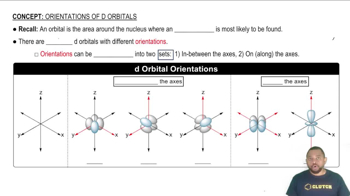Here are the essential concepts you must grasp in order to answer the question correctly.
Electron Configuration
Electron configuration describes the distribution of electrons in an atom's orbitals. It follows the Aufbau principle, which states that electrons fill the lowest energy orbitals first, and is represented using a notation that indicates the energy levels and sublevels occupied by electrons. Understanding this concept is crucial for determining the electron configuration of ions, as it helps in identifying how many electrons are present and how they are arranged.
Recommended video:
Electron Configuration Example
Ionization and Charge
Ionization refers to the process of removing electrons from an atom, resulting in the formation of ions. The charge of an ion indicates the number of electrons lost or gained compared to the neutral atom. For example, Ti³⁺ indicates that titanium has lost three electrons, while Mn⁴⁺ indicates that manganese has lost four electrons. Recognizing how to adjust the electron configuration based on the ion's charge is essential for accurately writing the configurations of these ions.
Recommended video:
Transition Metals and d-Orbitals
Transition metals are elements found in the d-block of the periodic table, characterized by the presence of d-orbitals. These metals often exhibit variable oxidation states and complex electron configurations due to the involvement of d-electrons in bonding and ionization. Understanding the behavior of d-orbitals is important for predicting the electron configurations of transition metal ions, as the removal of electrons typically occurs from the outermost s and d orbitals.
Recommended video:
 Verified step by step guidance
Verified step by step guidance

